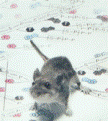Papers in the Biological Sciences

Jay F. Storz Publications
Document Type
Article
Date of this Version
8-1-2015
Citation
Am J Physiol Regul Integr Comp Physiol. 2015 Aug 1; 309(3): R197–R214.
Abstract
Whole animal physiological performance is highly polygenic and highly plastic, and the same is generally true for the many subordinate traits that underlie performance capacities. Quantitative genetics, therefore, provides an appropriate framework for the analysis of physiological phenotypes and can be used to infer the microevolutionary processes that have shaped patterns of trait variation within and among species. In cases where specific genes are known to contribute to variation in physiological traits, analyses of intraspecific polymorphism and interspecific divergence can reveal molecular mechanisms of functional evolution and can provide insights into the possible adaptive significance of observed sequence changes. In this review, we explain how the tools and theory of quantitative genetics, population genetics, and molecular evolution can inform our understanding of mechanism and process in physiological evolution. For example, lab-based studies of polygenic inheritance can be integrated with field-based studies of trait variation and survivorship to measure selection in the wild, thereby providing direct insights into the adaptive significance of physiological variation. Analyses of quantitative genetic variation in selection experiments can be used to probe interrelationships among traits and the genetic basis of physiological trade-offs and constraints. We review approaches for characterizing the genetic architecture of physiological traits, including linkage mapping and association mapping, and systems approaches for dissecting intermediary steps in the chain of causation between genotype and phenotype. We also discuss the promise and limitations of population genomic approaches for inferring adaptation at specific loci. We end by highlighting the role of organismal physiology in the functional synthesis of evolutionary biology.


Comments
Copyright © 2015 the American Physiological Society. Used by permission.